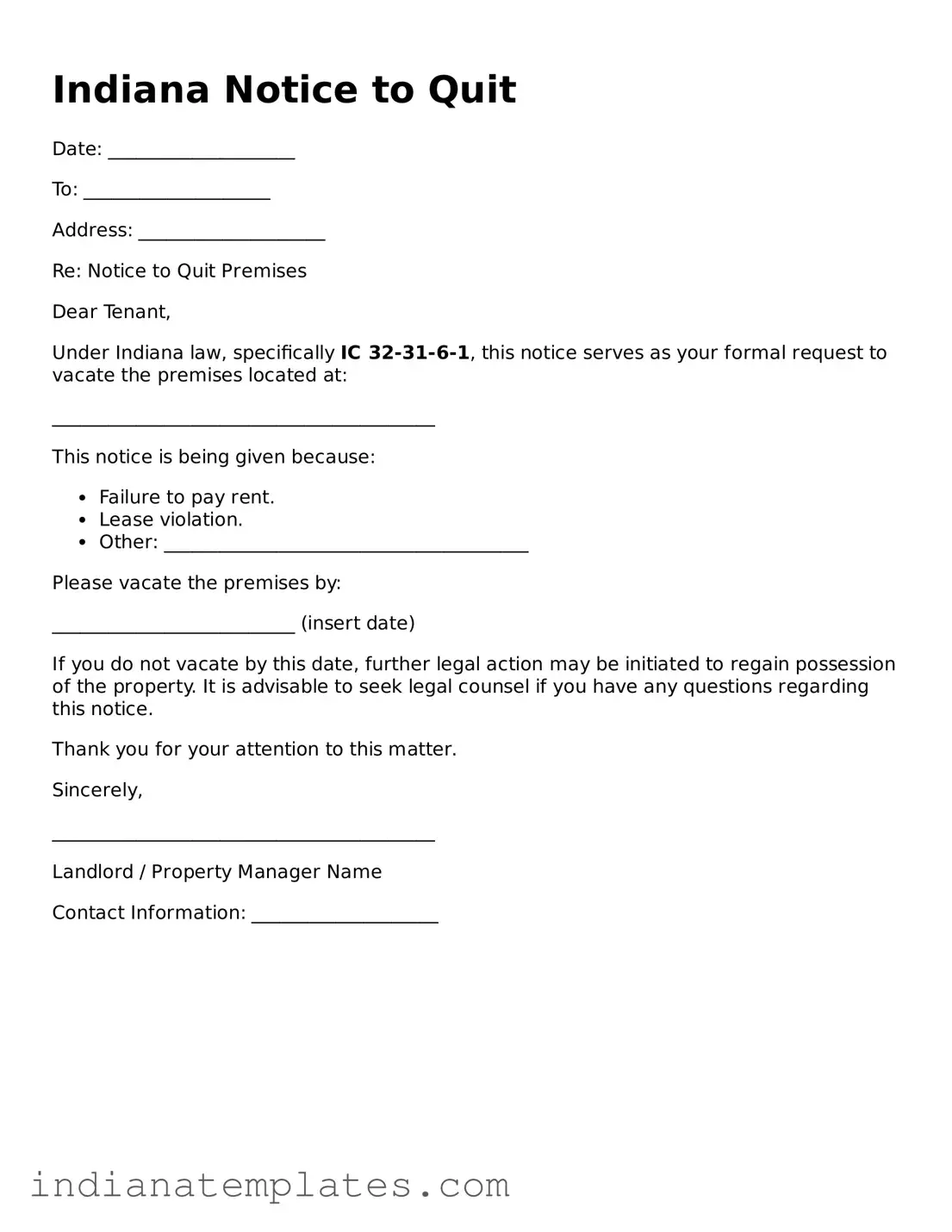Free Indiana Notice to Quit Template
The Indiana Notice to Quit form is a legal document used by landlords to inform tenants that they must vacate the rental property. This form serves as an official notice, indicating the reasons for termination of the lease and the time frame in which the tenant must leave. Understanding this form is crucial for both landlords and tenants to ensure compliance with Indiana rental laws.
If you need to fill out the Notice to Quit form, please click the button below.
Modify Form
